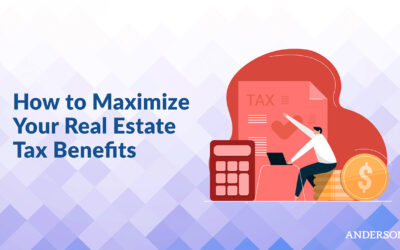Updated February 9, 2021
\One of the ways the government incentivizes home ownership is to allow an exclusion of capital gains up to a certain amount when a person sells their “main home.” This is known as the Section 121 exclusion. While the Section 121 exclusion works well for many people, it is not the best tax planning strategy for everyone.
This article discusses another strategy that you can use to manage the potential tax liability resulting from the sale of your main home. You are taking the time to read this, so there is no doubt that you are proactive. The only other thing you need to move forward is the desire to learn and a little patience. Are you ready? Great then, but before we get to the tax strategy, you should be fully informed, so let’s summarize the Section 121 exclusion first.
The Section 121 exclusion
The IRS tells us,
“You’re eligible for the exclusion if you have owned and used your home as your main home for a period aggregating at least two years out of the five years prior to its date of sale. You can meet the ownership and use tests during different 2-year periods. However, you must meet both tests during the 5-year period ending on the date of the sale. Generally, you’re not eligible for the exclusion if you excluded the gain from the sale of another home during the two-year period prior to the sale of your home.”
- Whether the home you are looking to sell is your “main home” depends on whether the address appears on your driver’s license and other important documents, whether the home is located near your bank, your workplace, and the residences of your other family members. There are other factors to consider in determining your “main home” is, but these are the main ones.
- If you owned the home for at least 24 months (2 years) out of the last 5 years leading up to the date of sale (date of the closing), you meet the ownership requirement. For a married couple filing jointly, only one spouse has to meet the ownership requirement.”
- “The 24 months of residence can fall anywhere within the 5-year period, and it doesn’t have to be a single block of time. All that is required is a total of 24 months (730 days) of residence during the 5-year period. Unlike the ownership requirement, each spouse must meet the residence requirement individually for a married couple filing jointly to get the full exclusion.”
- “If you didn’t sell another home during the 2-year period before the date of sale (or, if you did sell another home during this period, you didn’t take claim an exclusion of the gain earned from it), you meet the look-back requirement. You may take the exclusion only once during a 2-year period.”
- There are some exceptions to the eligibility test used by the IRS including: separation or divorce; death of a spouse; the sale of vacant land, etc. Talk to a tax professional for more information.
The maximum exclusion of gain under Section 121 is $250,000, or $500,000 if married and filing jointly.
As was already stated above, the Section 121 exclusion works well for many people. However, some people will have very large capital gains from the sale of their main home which will exceed the Section 121 exclusion amount ($250,000, or $500,000 if married and filing jointly) and other people are disqualified from using the Section 121 exclusion for various reasons. Have no fear though, because there is a great alternative for those people.
To understand the “shifting strategy,” let’s look at a hypothetical person named Pete and his wife Linda.
Pete and Linda own a condominium in a very desirable beach community. They plan to start having children in a few years and have decided that it is time to think about selling their beach condo so they can move to a family-friendly neighborhood closer to the best schools in the area.
Pete and Linda will be eligible for the Section 121 exclusion when they sell. Their gross capital gain on the sale is estimated to be $1.5 million. If they rely solely on the Section 121 exclusion, they will still recognize a net $1 million capital gain. That will result in a $200,000 tax liability. Pete and Linda can think of countless other ways they would rather spend that money than give it to Uncle Sam, so they contact their tax advisors to discuss alternatives. Their advisors come up with the perfect strategy.
The advisors tell the couple to shift the beach condo from a main residence to an investment property. At first, Pete and Linda are surprised to hear that, but the advisors explain further. If the couple begins to market and rent the beach condo now, which will have no shortage of prospective tenants, then they can classify it as an investment property and sell it later using a 1031 exchange to buy a replacement investment property, which will be a home in their dream neighborhood. Pete and Linda can then market and rent their dream home for a period of time so that it qualifies as an investment property. Then, after some time has passed, the couple will move into their dream home and begin residing there without paying any capital gains from the sale of the beach condo.
After five years living in their dream home, it will be considered their main residence and it will be eligible for the Section 121 exclusion should Pete and Linda decide to take advantage of that exclusion in the future. By being patient, proactive and willing to hire the right advisors, Pete and Linda will save $200,000 and achieve all of their home ownership goals. Since they planned ahead, they will move into their dream home just in time for the birth of their first child.
Using an S corporation to maximize depreciation
Now that you understand the Section 121 exclusion and the strategy of shifting your main home to an investment property, let’s talk about how you can use an S corporation to shelter even more of your money from taxes by maximizing depreciation. For this example, we will analyze a hypothetical transaction between Sonny and his wife and their S corporation.
Sonny and his wife bought their main home 15 years ago for $200,000; that is their tax basis. The couple sells their main home to their S corporation via a 20-year installment sale for $500,000; that is the S corporation’s tax basis. “Installment sale” is just another way of saying that the sales price will be paid over time, just like when you finance a car or anything else.
To get this sale to qualify under Section 121 and receive the full benefits of that exclusion, Sonny and his wife tell the IRS that they are going to opt-out of installment sale treatment. They basically tell the IRS “Yes, we sold this property to our S corporation on an installment basis, but we’re going to treat all that gain as happening in the year of the sale.” Since their gross capital gain is $300,000 and that amount is within the Section 121 $500,000 exclusion amount if married and filing jointly, Sonny and his wife recognize zero gain on the sale of their main home to their S corporation.
Now the S corporation owns a $500,000 asset that it can depreciate over 27.5 years (instead of a $200,000 asset that Sonny and his wife could depreciate had they shifted their main home to an investment property without selling it to their S corporation). Sonny and his wife would have only been able to depreciate about $8,000 per year. However, the S corporation has a higher basis and can depreciate about $18,000 per year. If the income on the investment property is $20,000 per year, then Sonny and his wife would have realized about $12,000 in taxable income per year ($20,000 – $8,000). However, their S corp, which is a pass through entity for tax purposes, will only realize about $2,000 in taxable income ($20,000 – $18,000).
What’s next?
This article covers just a few tax planning tips applicable to the home gain exclusion. Let us help you maximize the potential tax advantages available to you.
Take advantage of over two decades worth of real estate, tax, and asset protection experience that only Anderson Advisors can provide. We will help you avoid mistakes, financial losses and the unintended consequences of trying to do it on your own. Give us a call today 800.706.4741















